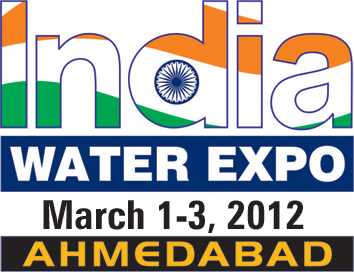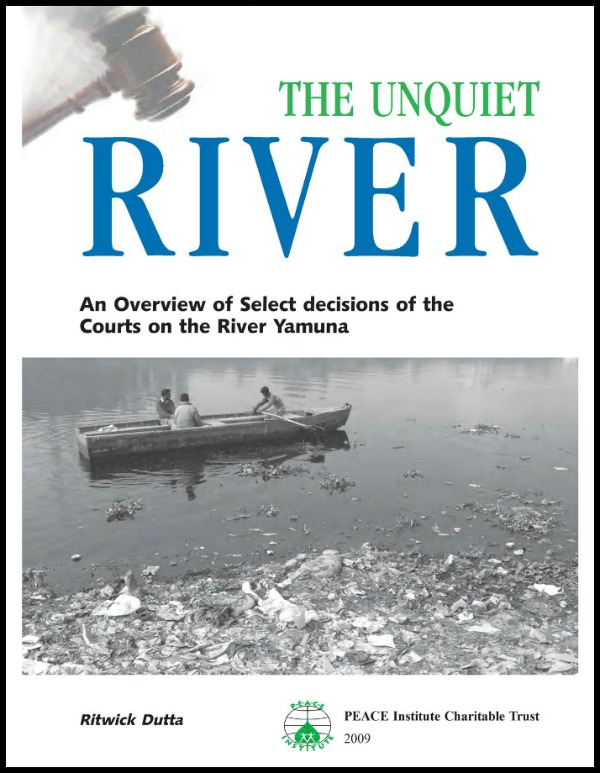/topics/contamination-pollution-and-quality
Contamination, Pollution and Quality
Saving some last remaining free flowing rivers
Posted on 24 Jan, 2012 06:38 AMGuest post by: Parineeta Dandekar
Evaluation of physico-chemical characteristics in groundwater using GIS – A case study of Chinnar sub-basin, Cauvery River, Tamil Nadu, India
Posted on 20 Jan, 2012 04:26 PMThe study found that the groundwater of the basin is extremely hard with total hardness, magnesium and potassium contents being above the permissible limits. Thirty nine out of 57 samples exceed the allowable limits for fluoride.

India Water Expo, March 1-3, 2012, Ahmedabad
Posted on 20 Jan, 2012 09:05 AMOrganizer: ASSOCHAM,
EverythingAboutWater
Venue: Gujarat University Exhibition Hall, Ahmedabad

Description:
India Water Expo - the exclusive trade show on Indian Water Industry will next take place in Ahmedabad (1-3 March, 2012).The event will showcase latest offerings in water market and help bridge knowledge gaps on water & wastewater management for users industries. As a cost effective marketing platform for key players, India Water Expo ensures that you reach your target customers in India. Manufacturers specializing in water treatment, wastewater management and all other related industries can showcase and exhibit their products and expertise.
India Water Expo, April 27-29, 2012, Chennai
Posted on 20 Jan, 2012 09:02 AMOrganizer: ASSOCHAM,
EverythingAboutWater
Venue: Chennai Trade Centre, Chennai

Description:
India Water Expo - the exclusive trade show on Indian Water Industry will next take place in Chennai (27-29 April, 2012). The event will showcase latest offerings in water market and help bridge knowledge gaps on water & wastewater management for users industries. As a cost effective marketing platform for key players, India Water Expo ensures that you reach your target customers in India. Manufacturers specializing in water treatment, wastewater management and all other related industries can showcase and exhibit their products and expertise.
Groundwater hydrology and groundwater quality in and around Bangalore city - Department of Mines and Geology (2011)
Posted on 19 Jan, 2012 11:04 AMEarlier studies carried out by the Department of Mines and Geology during 1994, 1995 and 2003 on the groundwater quality of Bangalore Metropolis had found that the groundwater pollution in the city has mainly been due to sewage disposal and recommendations have been made to prevent pollution from sewage and industrial wastes.
Community managed sanitation in Kerala - Tools to promote governance and improve health - A Report by the World Bank Institute
Posted on 16 Jan, 2012 01:14 PMIt also deals with the efforts made by the Government of India to revolutionise sanitation services in the state of Kerala, with the aim of improving public health. Earlier experience had shown that significant governance problems had hindered water and sanitation reforms in local and national programmes in the state.
The unquiet river: An overview of select decisions of the courts on the river Yamuna
Posted on 14 Jan, 2012 06:40 PMThe river has attained the distinction of being perhaps the river attracting the most judicial attention in india, after the Ganga. This report analyses the various laws and judicial decisions pertaining to the Yamuna and their effects on the river.
Environment Statistics – A compendium by the Ministry of Statistics and Programme Implementation (2011)
Posted on 07 Jan, 2012 04:25 PMIt broadly covers five core parameters, viz., biodiversity, atmosphere, land/soil, water and human settlements suggested by the Framework for Development of Environment Statistics (FDES) published by United Nations Statistics Division (UNSD) in 1984.
Surveillance of drinking water quality - safe water Initiative - A presentation
Posted on 07 Jan, 2012 10:28 AMThis presentation by Dr.Nanoti at the 'International Conference on Health and Environment' organised by Centre for Science and Environment explains the method and importance of regular monitoring of drinking water quality in urban areas.
The presentation begins with the argument that managers of urban water supply systems stand to benefit from the fresh perspective offered by an external assessor.
Norms and standards of municipal basic services in India: Report by the National Institute of Urban Affairs
Posted on 07 Jan, 2012 10:04 AMStudies indicate that the levels of infrastructure services available in urban regions in India are improving, however their quality is still debatable. This paper uses secondary data available from various government report to review the norms and standards for the following basic services
- Water supply
- Sewereage
- Solid waste management
- Primary education
- Preventive health care
In addition resource gaps and measures to bridge these gaps are also examined.





